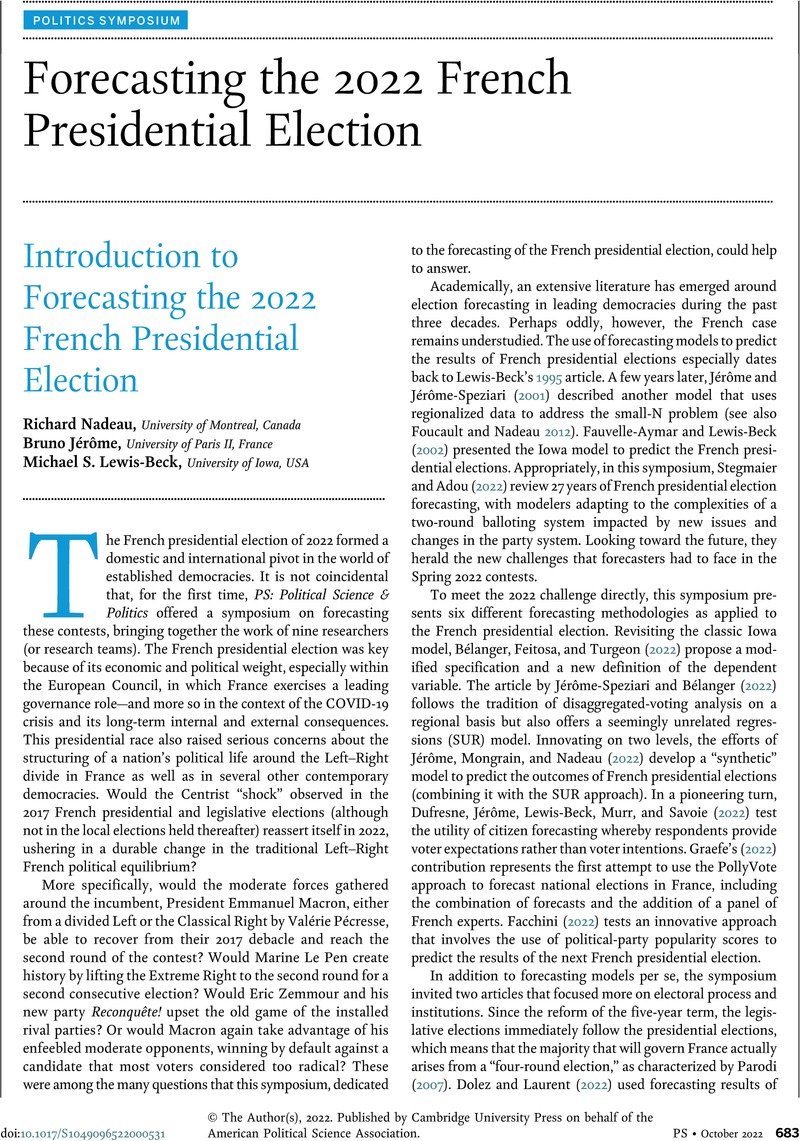Crossref Citations
This article has been cited by the following publications. This list is generated based on data provided by Crossref.
Jérôme, Bruno
2024.
Prévision électorale : des méthodes non quantitatives aux modèles de vote politico-économiques.
Journal des Économistes et des Études Humaines,



